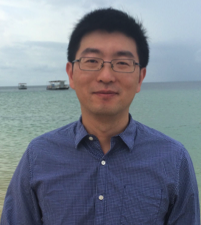应我校材料科学与工程学院方海涛教授邀请,澳大利亚新南威尔士大学(UNSW)王大伟副教授9月1日到4日在我校访问,于2日和3日做三次学术报告,欢迎广大师生参加。
报告一题目:类粘土结构的超电容储能A Clay-like Structure for Capacitive Storage
时间:9月2日上午9:00
地点:一校区邵馆焊接重点实验室205会议室(面向邵馆的左侧二层楼区)
The use of porous electrode has been the most popular option for capacitive storage, simply because of the linear proportion between the capacitance and the electrode surface area. But is this true when the surface area is more often measured via non-electrochemical means? In recent years, it has been more widely recognized about the inconsistency between the gas adsorption method and the electrochemical processes in detecting the truly effective electrode areas.
Rather than struggling heavily to maximize the gas adsorption surface area, one should really look at what is demanded by the electrode processes, that is the ion accessibility. In this work, instead of creating ‘dry’ porous network for ion to access, we created ‘wet’ network with prescribed fluid as the ion conduction channels for ion to access.
Such a structure mimics the natural clays in terms of the fluid-in-solid nature. Given the non-porous nature, the ion access behavior is more suitable described as an intercalation mechanism. Though the philosophy of getting ions into ‘wet’ instead of ‘dry’ network seems straightforward, the artificial synthesis of such clay-like structure bearing both good ionic and electronic conductivity has been extremely challenging. In this talk, I’d like to share the discovery of a new layered material with intercalative fluid-in-solid heterostructure and their related capacitive behaviors. Their great potential in device applications will be highlighted as well.
References
[1] K. Xiao, D. Wang, et al. Advanced Materials, 2018, 30, 1800400
[2] K. Xiao, D. Wang, et al. Energy Storage Materials, 2018, 14, 90-99
报告二题目:科研中的变与应变The Change and Your Reaction in Scientific Research
时间:9月2日下午2:00
地点:一校区邵馆焊接重点实验室205会议室(面向邵馆的左侧二层楼区)
Change is continual in every aspect in scientific research. From the moment you were assigned a project in your first year of PhD, the trajectory started to become dynamic. We had to change, because our original plan didn’t work through. We had to change, because we were behind our competitor and we were unable to publish as the first. We had to change, because it simply showed better potential. Change seems the only thing that does not change in scientific research. We shall welcome change. We should not fear change. We are intelligent people who are adaptable with change and can achieve greater outcome through change.
I will share some of my own key moments in research that had led me to the finding of exciting new results while abandoning my original ideas. Knowing the distinct changes everyone has encountered in their own research experience, I will also share some of my low moments in research that the change did not take me any further but did let me see alternative possibilities.
Last, but not least, change is the magic element of research that makes tomorrow a new day with unexpected opportunities. Be responsive and proactive, you will win over change, instead of the other way around.
报告三题目:新南威尔士大学的能源研究Energy Research in UNSW: Past, Present, Next ?
时间:9月3日上午9:00
地点:一校区邵馆焊接重点实验室205会议室(面向邵馆的左侧二层楼区)
Energy research in UNSW has escalated in the last 5 years. Energy boomed along the exponential growth of China’s global influence in the renewable energy sector. UNSW has long been renowned for its success in commercializing solar cells and vanadium flow batteries. Nowadays, while maintaining and reinforcing those heritage, the new game players are strategizing our position to become ready for technological translation. The thoughts, policies, frameworks, successes (and failures) in the process will be more or less talked about.
主讲人简介:

王大伟博士现为澳大利亚新南威尔士大学(UNSW)化工学院副教授,UNSW校聘Scientia研究员。他目前主要研究包括为二维能源材料化学与界面机制、电化学能源器件(超级电容器,金属/硫电池,金属离子电池,水系液流电池和燃料电池等)。他作为项目负责人已获得超过800万澳元的政府和企业研究经费。他贡献了两本专业书籍的章节撰写、已发表100余篇论文、获得了8项专利、完成20余次邀请及主题报告。他的论文总引用次数超过15,000次,h因子为45(谷歌学术)。他获得2013年澳大利亚Scopus工程技术领域年度青年科学家奖(Scopus Young Researcher of the Year Award in Engineering and Technology),2018年度 Clarivate Analytics HCR Awards和Finalist of AMP Tomorrow Maker奖。


